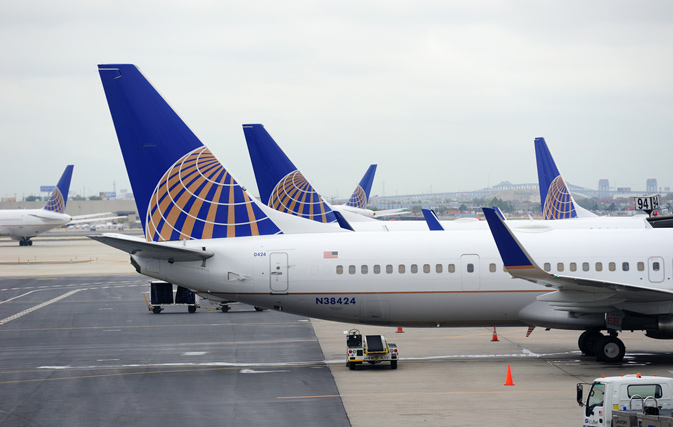NEW YORK — To win the hearts of frequent business travellers, United Airlines is going through their stomachs.
The carrier has been looking for ways to woo back some of its top fliers who defected to other carriers following a rocky merger with Continental Airlines. So, it’s upgrading first class food options and replacing snacks with full meals on some of its shortest flights.
The changes, announced Thursday, mean that instead of potato chips, chocolate chip cookies and bananas, passengers on flights of at least 800 miles will get meals such as chicken and mozzarella on a tomato focaccia roll and turkey and Swiss cheese on a cranberry baguette. Currently, meals are only served on flights of 900 miles or more _ trips that usually last close to two hours.
Passengers on 13 extra routes, such as Houston-to-Des Moines, Iowa, will be getting full meal service starting in February.
The move comes as American Airlines goes the other way, eliminating hot meals on most flights less than 1,000 miles starting Sept. 1. The change _ which upset many frequent fliers _ is part of American’s merger with US Airways and does expand meals to some US Airways flights that previously only had snacks. Delta Air Lines serves first class meals only on flights of more than 900 miles.
That means United will offer full meals on more short flights than its competitors, although each airline makes exceptions for some key shorter business routes like the 731-mile trip between New York and Chicago.
United already this month replaced two bland salad options with four heartier choices. Starting Sept. 1, three frozen and reheated sandwiches currently served will be replaced by eight sandwich and wrap choices made daily. In the fall, it will add Prosecco sparkling wine to its beverage menu.
“Customers shouldn’t have to make sacrifices just because they are onboard an aircraft,” says Todd Traynor-Corey, the airline’s managing director of food design.
That might be true, but in an industry known for its razor-thin profit margins, food has always been a target of cost-cutting. With U.S. airlines each year carrying 645 million passengers domestically, every little food decision had big implications. In the 1980s, then American Airlines CEO Robert Crandall famously decided to remove a single olive from every salad. The thought was: passengers wouldn’t notice and American would save $40,000 a year.
It’s been a decade since most airlines stopped serving free meals in coach on domestic flights.
Dennis Cary, an airline consultant with ICF International, says meals alone won’t drive passengers to one airline over another, but can help leave a better impression of a flight.
“It’s on the margin,” Cary says, “but it’s one of the things people like to talk about.”
United has been struggling since its 2010 merger with Continental. It lags behind American and Delta in the number of planes with Wi-Fi, its on-time performance slipped and a series of computer glitches have left passengers angry. Business travellers who fly weekly got fed up with the repeated problems; other airlines were successful in luring some away.
CEO Jeff Smisek has struggled to collect the same high airfares from business customers that other airline do, leading to pressure from Wall Street analysts. Improving food could be a start to winning back some passengers.
A hot meal on a two-hour flight might not sound like a necessity, but for busy frequent fliers it might be the only chance to grab a bite.
“Business travellers, running from a meeting to catch an earlier flight, don’t have the time stop and pick up food along the way,” says Gary Leff, co-founder of online frequent flier discussion site MilePoint.
